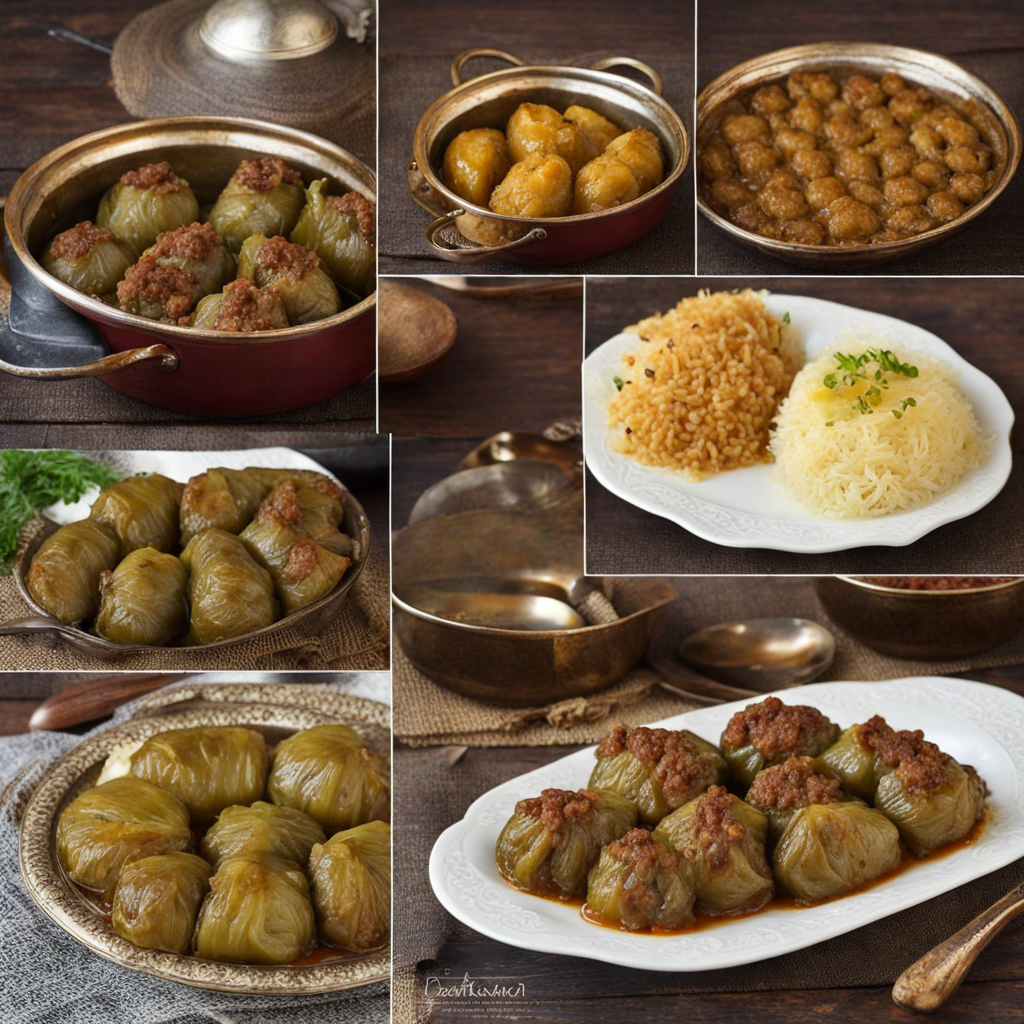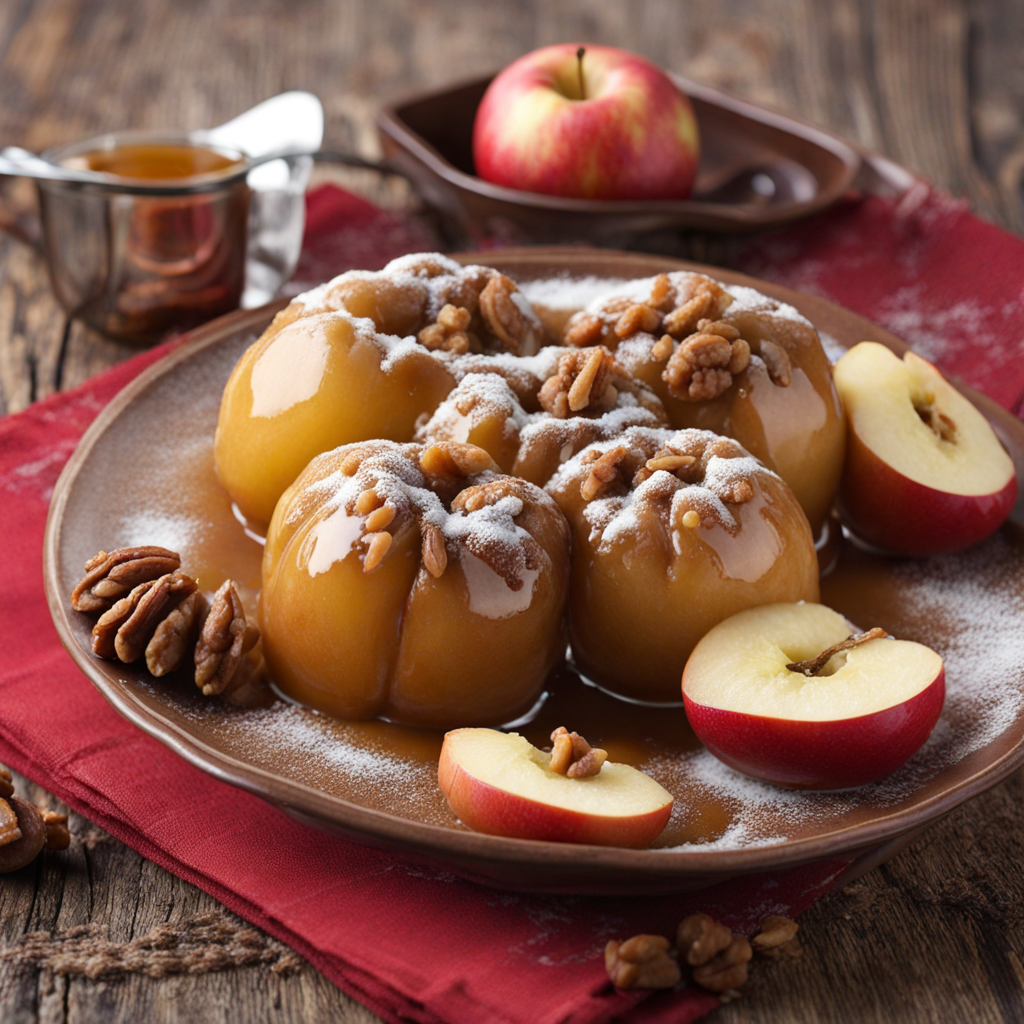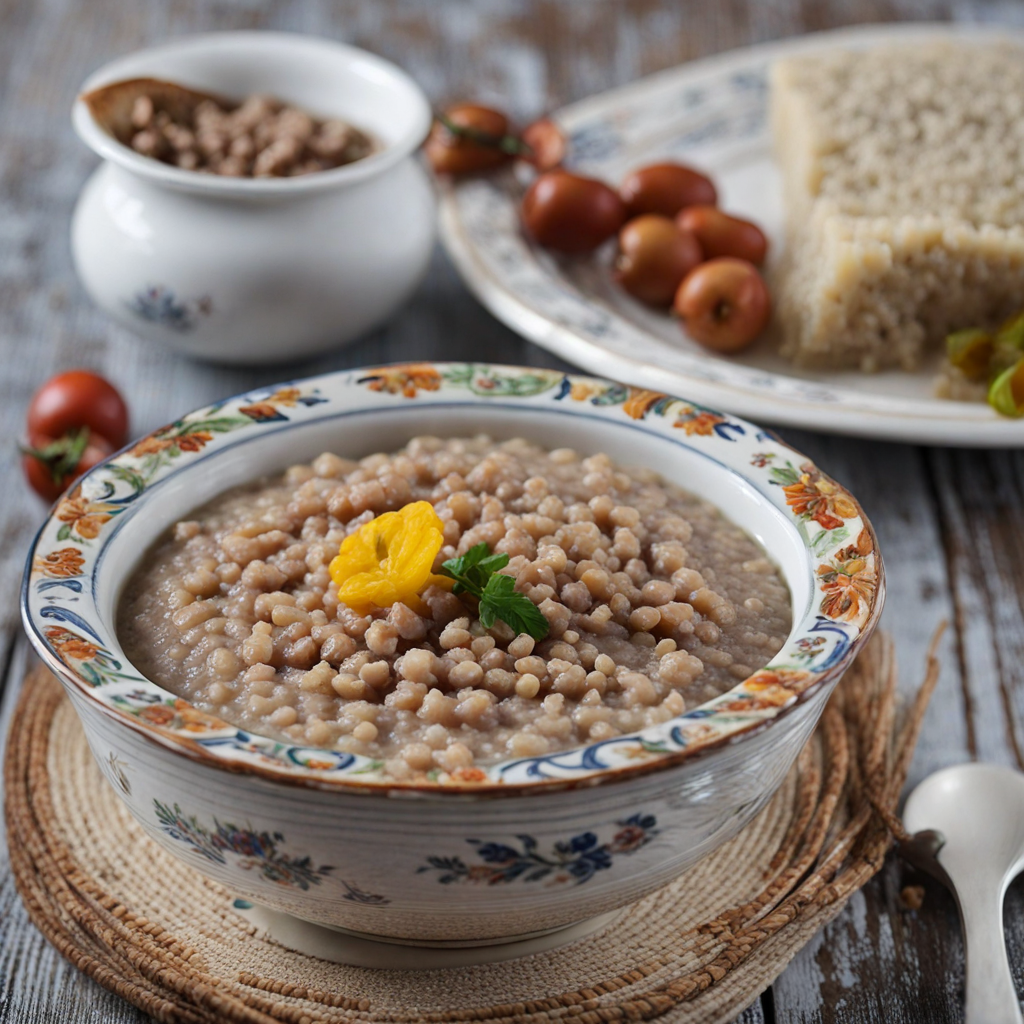Ružice
Ružice, a delightful pastry from Bosnia and Herzegovina, showcases the region's rich culinary heritage. These charming little treats are made from thin layers of dough that are meticulously rolled out and filled with a variety of sweet and savory fillings. Traditional fillings often include a mix of fresh cheese, spinach, or even meat, all seasoned with local herbs and spices, providing a perfect balance of flavors. The dough is crafted to achieve a delicate, flaky texture that melts in your mouth, offering an inviting contrast to the heartiness of the fillings. The preparation of Ružice is an art in itself, as the dough is shaped into a spiral or rose-like form before baking. This unique presentation not only makes them visually appealing but also allows for the fillings to be evenly distributed throughout the pastry. Once baked, Ružice takes on a beautiful golden hue, with a crisp exterior that yields to the soft, flavorful interior. They can be enjoyed warm or at room temperature, making them a versatile choice for any occasion—whether as an appetizer, a snack, or even a dessert. Ružice is often accompanied by a dollop of yogurt or a tangy dipping sauce, enhancing the flavors and providing a refreshing counterpoint to the richness of the pastry. Each bite is a journey through the vibrant tastes of Bosnia and Herzegovina, making Ružice a must-try for anyone looking to explore new culinary experiences. Whether shared at a festive gathering or savored in solitude, these pastries leave a lasting impression that invites you to return for more.
How It Became This Dish
The Culinary Journey of Ружице: A Bosnian Delicacy In the heart of the Balkans, where the confluence of cultures, traditions, and histories creates a rich tapestry of life, lies Bosnia and Herzegovina. This region is not only renowned for its stunning landscapes and intricate architecture but also for its vibrant culinary heritage. Among the many delightful dishes that grace Bosnian tables, Ружице (Ružice) stands out as a symbol of both cultural significance and the deep-rooted traditions of the land. Origin and Meaning Ружице, which translates to "little roses" in English, is a sweet pastry that is characterized by its unique shape and flavor. The origins of this delightful treat can be traced back to the Ottoman Empire, which ruled over the Balkans for centuries. The influence of Ottoman culinary practices introduced a variety of sweet and savory pastries to the region, and Ružice is a prime example of this culinary exchange. The name itself evokes the imagery of blooming roses, which is fitting considering the pastry's delicate appearance. Traditionally, Ružice is made from a soft dough that is skillfully rolled out, filled with a mixture of ground nuts, sugar, and sometimes flavored with rosewater or vanilla. The dough is then shaped into small, rose-like forms before being baked to a golden brown, often dusted with powdered sugar for added sweetness. Cultural Significance Ružice holds a special place in Bosnian culture, particularly during festive occasions. It is commonly prepared for weddings, religious holidays, and family gatherings, symbolizing joy, prosperity, and the beauty of life. The preparation of Ružice is often a communal activity, where family members come together to share stories, laughter, and the labor of love that goes into creating this cherished dessert. In Bosnian society, food is not merely sustenance; it is a means of connecting with one another and honoring traditions. Ružice embodies this spirit, as its preparation often involves the passing down of recipes and techniques from one generation to the next. The act of making Ružice is a celebration of heritage, where each family may have its own variations and secret ingredients, making every batch unique. Development Over Time As with many traditional dishes, the recipe for Ružice has evolved over time. The influence of neighboring cultures has led to variations in ingredients and techniques. For instance, while the classic filling consists of nuts, sugar, and spices, some families have experimented with chocolate or fruit preserves, adding a modern twist to the traditional recipe. During the 20th century, Bosnia and Herzegovina experienced significant social and political changes, particularly during the Yugoslav era and the subsequent conflicts of the 1990s. Despite these tumultuous times, the practice of making Ružice remained steadfast. It served as a comforting reminder of normalcy and continuity amid chaos, fostering a sense of community and resilience. In more recent years, there has been a resurgence of interest in traditional Bosnian cuisine, driven by a younger generation eager to reconnect with their roots. Ružice has found its way into cafes and bakeries, often accompanied by stories of its cultural significance. This revival not only preserves the dish but also introduces it to a wider audience, both locally and internationally. Contemporary Variations and Global Influence Today, Ružice has transcended its traditional boundaries, inspiring chefs and home cooks around the world. The pastry is increasingly featured in culinary festivals, international cookbooks, and online platforms celebrating Balkan cuisine. Chefs in Bosnia and Herzegovina and beyond are reinventing Ružice, experimenting with flavors and presentations while still honoring its origins. Modern variations may include gluten-free options, vegan adaptations, or even fusion recipes that incorporate ingredients from other culinary traditions. For instance, some bakers have begun to incorporate matcha or spices like cardamom, blending the classic Bosnian pastry with global flavors. This adaptability speaks to the resilience and creativity of Bosnian cuisine, allowing Ružice to evolve while remaining rooted in its cultural heritage. The Experience of Enjoying Ružice To truly appreciate Ružice, one must engage in the experience of enjoying it. Traditionally served with coffee or tea, this pastry is more than just a dessert; it is a social experience. Sharing Ružice with friends and family, often during festive occasions, reinforces bonds and creates lasting memories. The act of presenting Ružice is also significant. It is often arranged beautifully on platters, adorned with fresh flowers or decorative elements that reflect the beauty of the pastry itself. The visual appeal of Ružice, with its delicate rose-like shapes and dusting of powdered sugar, adds to the overall experience, making it a feast for the eyes as well as the palate. Conclusion Ружице is more than just a sweet pastry; it is a testament to the enduring spirit of Bosnia and Herzegovina's culinary heritage. Rooted in the traditions of the past, it continues to evolve and adapt in the modern world, bridging generations and cultures. Whether enjoyed at a family gathering, a wedding celebration, or a quiet afternoon with coffee, Ružice encapsulates the warmth, love, and joy that food brings to our lives. As Bosnia and Herzegovina continues to carve its identity on the global culinary stage, Ružice serves as a delicious reminder of the country’s rich history and the importance of preserving cultural traditions. Each bite of this exquisite pastry tells a story of resilience, community, and the beauty of life, making it a beloved delicacy that will undoubtedly endure for generations to come.
You may like
Discover local flavors from Bosnia And Herzegovina







